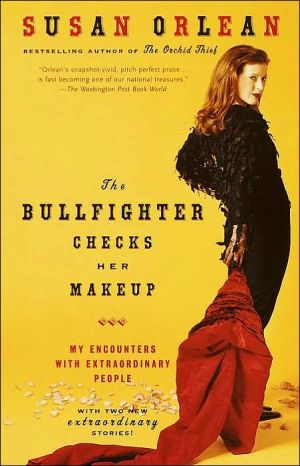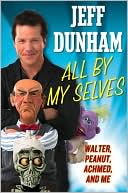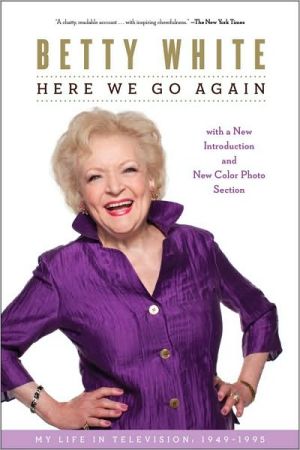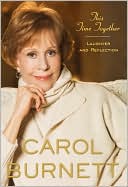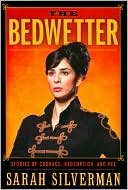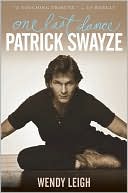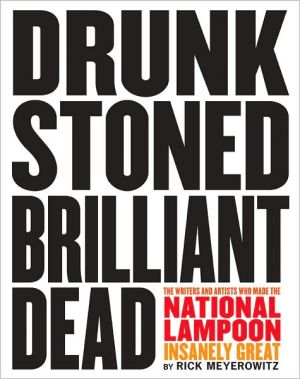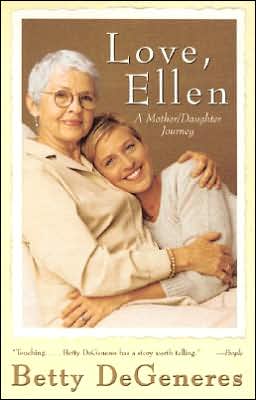The Bullfighter Checks Her Makeup: My Encounters with Extraordinary People
The bestselling author of The Orchid Thief is back — and she's brought some friends — in this wonderfully entertaining collection of the acclaimed New Yorker writer's best and brightest profiles. Meet more than thirty-five of Susan Orlean's favorite people — from the well known (Bill Blass and Tonya Harding) to the unknown (a typical ten-year-old boy) to the formerly known (the 1960s girl group the Shaggs). \ Passionate people. Famous people. Short people. Young people. And one championship...
Search in google:
A joyful, luminous tour of the human condition via an eclectic array of people, as seen through the eyes of one of America's most entertaining and original literary journalists USA Today - Lynne Perri The Bullfighter Checks Her Makeup: My Encounters with Extraordinary People is the final marriage of Susan Orlean's acute observation, strong reporting and fluid writing. More than any of her other stories, this one is a beautifully crafted case study of a well-written magazine piece.
I always wanted to be a writer. In fact, as far as I can recall, I have never wanted to be anything other than a writer. In junior high school I took a career guidance test that suggested I would do well as either an army officer or a forest ranger but I didn't care: I wanted only to be a writer, even though I didn't know how you went about becoming one, especially the kind of writer I wanted to be. I didn't want to be a newspaper reporter, because I have never cared about knowing something first, and I didn't want to write only about things that were considered "important" and newsworthy; I wanted to write about things that intrigued me, and to write about them in a way that would surprise readers who might not have expected to find these things intriguing. During college I kept a journal with a section called "Items Under Consideration," which was a meditation on what I was going to do once I graduated. It was filled with entries like this:\ What to Do/Future Plans Why I Should Go into Journalism Pro:\ Fun!\ Interesting!\ Writing!\ Activity and excitement!\ Good people (maybe)\ Social value Con:\ No jobs available Have to live in NYC for serious work on a magazine Talent is questionable\ Except for some interstitial waitressing, my first job out of college was writing for a tiny magazine in Oregon, and I made it clear at the interview that I would absolutely, positively die if I didn't get hired. After all, I knew being a writer would be "Fun! Interesting!" and full of "Activity and excitement!" I had no experience to speak of, except that I had been the editor of my high school yearbook. When I went to the job interview in Oregon, I brought a copy of the yearbook and a kind of wild, exuberant determination, which was the only thing that could account for my having gotten the job.\ What I wanted to write about were the people and places around me. I didn't want to write about famous people simply because they were famous, and I didn't want to write about charming little things that were self-consciously charming and little; I wasn't interested in documenting or predicting trends, and I didn't have polemics to air or sociological theories to spin out. I just wanted to write what are usually called "features" — a term that I hate because it sounds so fluffy and lightweight, like pillow stuffing, but that is used to describe stories that move at their own pace, rather than the news stories that race to keep time with events. The subjects I was drawn to were often completely ordinary, but I was confident that I could find something extraordinary in their ordinariness. I really believed that anything at all was worth writing about if you cared about it enough, and that the best and only necessary justification for writing any particular story was that I cared about it. The challenge was to write these stories in a way that got other people as interested in them as I was. The piece that convinced me this was possible was Mark Singer's profile of three building superintendents that ran in The New Yorker when I was in college. The piece was eloquent and funny and full of wonder even though the subject was unabashedly mundane. After I read it, I had that rare, heady feeling that I now knew something about life I hadn't known before I read it. At the same time, the story was so natural that I couldn't believe it had never been written until then. Like the very best examples of literary nonfiction, it was at once familiar and original, like a folk melody — as good an example as you could ever find of the poetry of facts and the art in ordinary life.\ My first feature for The New Yorker was a profile of Nana Kwabena Oppong, a cabdriver in New York City. Nana's life as a cabbie was the embodiment of ordinariness, but he also happened to have the extraordinary honor of being the king of his tribe, the Ashantis, in the United States. His life seesawed between its two extremes, between the humdrum concerns of daily life, like doing maintenance on his cab and prodding his kids to do their homework and looking for a new apartment, and his royal concerns, like resolving property disputes and officiating at Ashanti ceremonies and overseeing the transportation of deceased members of the tribe back to Ghana so they could be buried in their motherland. I spent months on the story. When I would get together with him, I never knew whether I was meeting with Nana the cabdriver or Nana the king. By the end of our time together, of course, I realized that there was no real difference, and that the marvel was watching him weave together these strands of his life.\ Just before I profiled Nana, I had been asked by Esquire to write a piece about the child actor Macaulay Culkin, who was ten years old at the time. I don't rule out doing celebrity profiles, but I wasn't in the mood to do one right then and I wasn't very interested in Macaulay Culkin. Then my editor told me that he was planning to use the headline the american man, age ten. On a whim, I told my editor that I would do the piece if I could find a typical American ten-year-old man to profile instead — someone who I thought was more deserving of that headline. It was an improbable idea since they had already photographed Macaulay for the cover of the magazine, but my editor decided to take me up on it. I was completely dismayed. First of all, I had to figure out what I'd had in mind when I made the suggestion. Obviously, there is no such thing as a "typical" boy or girl, and even if I could establish some very generous guidelines for what constitutes typicalness — say, a suburban kid from a middle-class family who went to public school and didn't have an agent, a manager, or a chauffeur — there was the problem of choosing one such kid. I considered going to a shopping mall and just snatching the first ten-year-old I found, but instead I asked my friends to ask their friends if they knew anyone with a ten-year-old, and eventually I got the name of a boy who lived in the New Jersey suburbs. I liked Colin Duffy right away because he seemed unfazed by the prospect of my observing him for a couple of weeks. He was a wonderful kid, and I still marvel at how lucky I was to have stumbled on someone so endearing, but the truth is that if you set out to write about a ten-year-old boy, any boy would do. The particulars of the story would have been entirely different with a different boy, but the fundamentals would have been the same: An ordinary life examined closely reveals itself to be exquisite and complicated and exceptional, somehow managing to be both heroic and plain.\ There are so many things I'm interested in writing about that settling on one drives me crazy. Usually it happens accidentally: Some bit of news will stick in my mind, or a friend will mention something, and suddenly a story presents itself or a subject engages me. For instance, I decided to profile Felipe Lopez, a star high school basketball player, because I had stumbled across a headline in the paper one day that said christ the king aims for revenge. It was one of those headlines that stops you dead in your tracks, and even after you figure it out, you can't quite get it out of your mind. Christ the King turned out to be a Catholic school in New York, and its basketball team was bent on avenging an embarrassing loss to another school. Before reading the story I hadn't realized that there was a Catholic basketball league in the city, and that alone got me interested. But what really hooked me was remembering how ardent people are about high school sports — I guess it was the fierceness of that headline — and that led me to thinking about how a kid who was really good at some sport must lead a very unusual sort of life, and then I started wondering who was the best high school basketball player in the country. I could only hope and pray that he went to a school as evocatively named as Christ the King. As it turned out, Felipe didn't — he went to a school with the very homely name of Rice — but he did live in New York, not far from my apartment, and, like Colin, was happy to have me follow him around.\ Some of these stories are about people who are well known, such as the designer Bill Blass and the Olympic figure skater Tonya Harding, and almost all of these were suggested to me rather than having been my own ideas, which tend to be about people who are not yet well known nor ever will be. Bill Blass was suggested to me by Tina Brown, who was editor of The New Yorker at the time, and I accepted the assignment when I found out that he still made personal trunk show appearances in small cities around the country, even though most people at his level in the fashion world had long since given it up. I loved the idea of profiling a world-class designer not in New York or Paris or Milan but in Nashville, at a ladies' luncheon in the middle of the week. Writing about Tonya Harding was a different kind of challenge. She had been in the news constantly after the attack on Nancy Kerrigan, and it was hard to imagine that there was a story left about her that hadn't already been told and retold. But I had noticed that all the newspaper stories mentioned she was from Portland, Oregon, which wasn't true: She was from the exurbs twenty miles or so outside of Portland. Because I used to live in Oregon, I knew the two places were entirely different, even antithetical, and I was convinced that Tonya Harding made a lot more sense if you understood something about where she was raised. I assumed that I wouldn't get to interview her when I went out to Oregon, so I interviewed people who cared about her and who lived in her town. It was a little like studying animal tracks and concluding something about a creature from the impression it has left behind. I still wish I could have talked to her, but maybe that will be another story another time.\ I love writing about places and things almost as much as I like writing about people, and I probably spend half of my time on stories that are primarily about a particular landscape or environment or event. For this book, though, I decided to gather together only pieces that center on people, to present an assembly of the various characters I've profiled so far in my career. There is nothing harder or more interesting than trying to say something eloquent about another person and no process is more challenging. It's much easier to, say, climb Mount Fuji and write about the experience (which I've done) than it is to hang around with a ten-year-old boy or an unemployed Hollywood agent or a famous fashion designer trying to be both unobtrusive and penetrating, and then try to make some sense out of what I've seen. It's just that people are so interesting. Writing about them, in tight focus, is irresistible. I am sure that I will continue doing profiles as long as I'm still writing, stepping in and out — lightly, I hope — of other people's lives.
IntroductionxiThe American Man, Age Ten3Meet the Shaggs15Show Dog27The Maui Surfer Girls37Living Large51I Want This Apartment73Devotion Road85After the Party97Shoot the Moon103Short People125Her Town167King of the Road177Tiffany189A Gentle Reign201This Is Perfect225Short Cuts235Figures in a Mall245The Three Sisters257Seriously Silly269La Matadora Revisa Su Maquillaje / (The Bullfighter Checks Her Makeup)279Author's Note293Acknowledgments295
\ From Barnes & NobleSusan Orlean has made her mark writing what are termed, in the publishing industry, features. They're the opposite of the hard news of the day -- unexpected looks at unremarkable people and events. Or so they may seem at first glance. It is the feature writer's task (and, one hopes, special gift) to find magic in the commonplace, whether it be a ten-year-old in the New Jersey suburbs or an African king driving a cab in New York. Orlean has shown a special aptitude for this work, and her new book, The Bullfighter Checks Her Makeup: My Encounters with Extraordinary People, compiles the best of her acclaimed work for The New Yorker.\ \ \ \ \ Lynne PerriThe Bullfighter Checks Her Makeup: My Encounters with Extraordinary People is the final marriage of Susan Orlean's acute observation, strong reporting and fluid writing. More than any of her other stories, this one is a beautifully crafted case study of a well-written magazine piece. \ — USA Today\ \ \ From The CriticsBelieve it or not, Orlean is probably interested in you. From the profiles in her latest book, following 1998's The Orchid Thief, one may assume she's interested in everyone. "An ordinary life examined closely," she writes, "reveals itself to be exquisite and exceptional, somehow managing to be both heroic and plain." The subjects in this collection vary widely, and include designer Bill Blass; Orlean's hairdresser; the obscure late-'60s band the Shaggs; high-school basketball star Felipe Lopez (now in the NBA); a man who decorates the window of a fish shop; Tonya Harding; a real estate broker; Ashanti king/cab driver Nana Kwabena Oppong; and Colin Duffy, ten-year-old boy. What brings this odd lot together, and what makes the book a success, is Orlean's underlying purpose: to discover and to reveal, without preconception or passing judgment, the essence of each individual with whom she spends time. Her approach is the same, whether she's learning about Fab Five Freddy's friendship with Andy Warhol or hanging out at the Modern Supply Company where, for more than thirty years, eighty-eight-year-old Leo Herschman has sold nothing but ceiling fans. All of the selections (mostly from The New Yorker, where Orlean is a staff writer) glow with the author's keen observations and finely crafted prose. They combine to proclaim that everyone, whether pop star or street vendor, is interesting and worthy of examination.\ —Ted Waitt \ \ \ \ \ \ \ Publishers WeeklyOne of the New Yorker's most distinctive stylists, Orlean (The Orchid Thief) has a knack for capturing "something extraordinary in [the] ordinariness" of her subjects. Most are completely unknown, or were before she wrote about them in these 20 essays and profiles. Sure, there's a piece on designer Bill Blass and another on figure skater Tanya Harding, but Orlean clearly prefers to write about lesser known people like Felipe Lopez, New York's first Dominican high school basketball phenom, or Kwabena Oppong, a New York taxicab driver who also happens to be the king of the Ashanti living in the United States. (He attends to his Ghanaian subjects--settling disputes, presiding over ceremonies--around his cab-driving schedule.) Disarming but disciplined, Orlean's style is unobtrusively first person, with deft leads: "If I were a bitch, I'd be in love with Biff Truesdale," she writes, opening a story on a prize show dog. While some stories obviously evolve from her life--a profile of a smalltown news reporter who inevitably knows everyone, a hairdresser who is a "perfect master of ceremonies"--in others, she ventures far afield: the cult-fave 1960s sister rock band, the Shaggs; teenage Hawaiian surfer girls with offhand fearlessness; a female Spanish matador. (Jan. 26) Forecast: Collections are rarely easy sells, but most of these pieces are gems, and Orleans has become such a staple of the New Yorker that her name together with the stylish jacket image of a woman in bullfighting garb may be a red cape for the magazine's many subscribers. 8-city author tour. Copyright 2000 Cahners Business Information.\ \ \ \ \ Library JournalIn the introduction to this collection of profiles she wrote for The New Yorker, Orlean (The Orchid Thief) tells the reader that she's always wanted to be a writer because she "wanted to write about things that intrigued me, and to write about them in a way that would surprise readers who might not have expected to find these things intriguing." Her stint as a staff writer for The New Yorker, which began in 1992, has provided her with many opportunities to indulge herself. The subjects she profiles include Bill Blass, the Shaggs (a Sixties girl group), Silly Billy (the most sought-after entertainer for children's birthday parties in New York), an African king who drives a taxi, and the first woman matador in Spain. The results are eclectic, engaging, and satisfying. Given the popularity of The Orchid Thief and a planned seven-city author tour, this book should be in demand. [Previewed in Prepub Alert, LJ 9/1/00.]--Pam Kingsbury, Alabama Humanities Fdn., Florence Copyright 2000 Cahners Business Information.\ \ \ \ \ Blaine HardenThe worth-the-trouble bar is high when it comes to collections of a journalist's old magazine articles. The subjects must be timeless, the writing remarkable and the voice so consistently engaging that it triumphs over lack of plot and sprawl of subject. Susan Orlean, who is inclined to find delight in everything from a fish-display window on Broadway to kinks in the hair of a Maui surfer girl, clears the bar with ease. This collection of profiles, most of which first appeared in The New Yorker, is unified by her ability to see, hear and get down in wickedly simple sentences the shifting textures of American life....in nearly every piece in this collection, Orlean paints a small but powerful portrait of real life on the edge of the mainstream. The edges add up. \ —New York Times Book Review\ \ \ \ \ U.S. News & World ReportThe author of The Orchid Thief profiles an Ashanti king who's a New York cabdriver, a female matador, and others. In a glorious chapter of vignettes, we meet such personalities as a man who revels in writing chatty grocery signs.\ \
